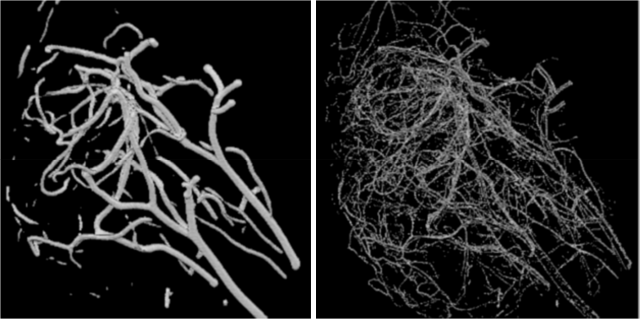Vasculature pathology is present in most human diseases, so there has been intense research for diagnosis and treatment of vascular diseases. Neurovascular dysfunction in pathogenesis of neurological diseases has been identified, notably Alzheimer's Disease (AD). Significant in these findings is that vascular abnormalities, characterised by angiogensis and abnormal cerebral microvasculature, could potentially serve as an early biomarker of AD.

For feasible validation of this theory, linking microvasculature to neurodegenerative pathology on large datasets, it is necessary to develop automated computational analysis methods. Existing techniques for this has mostly been developed for segmentation of large vessels, and analysis limited to curvature and diameter of individual vessels. Such methods are unsuitable for microvasculature, so research undertaken has looked at developing algorithms applied to 3D micro-CT images that have resolution on the order of several μm.
A variety of techniques have been reviewed and compared, using 2D representations as well as 3D image sets. This ranges from contrast and image enhancement, using the Gabor filter and matched filtering, to segmentation involving methods such as local entropy thresholding, multiscale vesselness filters, and level set frameworks. Each approaches have their drawbacks and benefits, but it was found that vesselness filtering performed well across most test cases. The main drawback of this approach is it's lack of scale invariance, requiring user interaction for selecting range of scales to test.
Citations: [·]